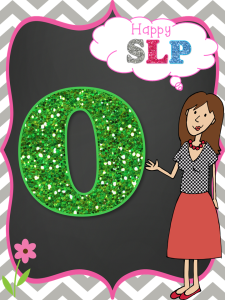Happy To Be an SLP Blog Hop
Welcome to the Happy To Be an SLP Blog Hop!
A special thanks to Felice, over at The Dabbling Speechie for putting this amazing blog hop together!!! In honor of BSHM, we are talking about about statistics, research and all other information regarding an area of speech pathology and/or audiology. As my faithful followers know, I am passionate about working with persons with ASD so I’ll be discussing the interesting topic of misdiagnosis/overdiagnosis of ASD. Read all about it below! Write down my secret letter and head on over to the next participating blog! Remember, you MUST enter to win the awesome TpT prizes ($50, $25, and $15 TPT gift cards, as well as a few other hidden goodies) in the rafflecopter at the end of this hop!
Looking where to begin this blog hop? No worries just click the picture below!
As we have just finished celebrating Autism Awareness Month in April, I thought it was a good time to share some pertinent information re: the diagnosis or possible misdiagnosis or overdiagnosis of ASD. As the incidence rate of ASD has risen dramatically over the last decade (30% increase in the last two years alone) and is now estimated to occur 1 in 68 children (1 in 42 males), new theories of overdiagnosis or misdiagnosis of ASD are emerging. But what could be causing such a phenomenon? According to Enrico Gnaulati, Ph.D., a clinical psychologist in Pasadena, CA in his article titled, 1 in 68 Children Now Has a Diagnosis of Autism-Spectrum Disorder-Why?, there could be a number of reasons the diagnosis of ASD is on the rise.
Dr. Gnaulati’s professional feeling is that children who are a bit late in development at very early ages may be at times misdiagnosed with mild ASD for a number of reasons:
- the push for early detection of ASD may lead to mistaking signs of developmental delay or difference for ASD.
- the younger a child is at diagnosis, the larger the range of error to misdiagnose a “slow-to-mature” child with ASD (supported by a research study out of the University of North Carolina at Chapel Hill, in 2007, where researchers found that over 30% of children who had been diagnosed as autistic at age two did not fit the diagnosis criteria by age four).
- ~1 in 5 children, 2 years of age are labeled as late-talkers as they do not meet the criteria an expressive vocabulary of at least 50 words nor do they use of 2-3 word phrases.
- “Data out of the famed Yale Study Center have demonstrated that toddlers with delayed language development are almost identical to their autistic spectrum disordered counterparts in their use of eye contact to gauge social interactions, the range of sounds and words they produce, and the emotional give-and-take they are capable of.”, says Dr. Gnaulati.
- adding “picky eating” as a sign or symptom of ASD can be misleading as according to Journal of the American Dietetic Association who followed 3,000 families found that 50% of toddlers were labeled “picky eaters” by their caregivers.
- typical toddler tantrums can be mistaken for “meltdowns”.
- young boys tend to prefer more solitary play than girls according to a French study from 2011, which again can be mistaken for social isolation than typical development (preschoolers’ outdoor nursery play was observed, recorded and published in PLoS One; observations the lead investigator Stéphanie Barbu to conclude that “ … preschool boys played alone more frequently than preschool girls. This difference was especially marked at 3-4 years.”).
- Regarding PK male play behaviors, Dr. Gnaulati continues “According to Dr. Barbu, it’s not until about age four or five that boys are involved in associative play to the same extent as girls. That’s the kind of play where there’s verbal interaction, and give-and-take exchanges of toys and ideas—or, non-autistic-like play.“
- although lacking “theory of mind” is used a a marker for ASD, it is reported that “between the ages of three and four the average girl is roughly twice as capable as the average boy at reading minds, and the gap doesn’t markedly close until they reach about age five or older.” Once again suggesting typical male behavior may be misinterpreted as signs or symptoms of ASD.
- deficits in fine motor skills can also be seen as an additional deficit for children with ASD, however “a classic study of preschoolers by Drs. Allen Burton and Michael Dancisak out of the University of Minnesota discovered that females in the 3-to 5-year-old range significantly outperform boys at this age in their acquisition of the “tripod” pencil grip.” In addition, females have also been observed to master finger pointing at an earlier age.
- pediatricians and child psychologists, the professionals who are looked to for diagnosis of ASD, have been found to have little or no coursework and minimal or no clinical experience in identification, diagnosis and treatment of ASD prior to practicing.
Although, I am not certain misdiagnosis can be the sole contributor to such a large increase in incidence of ASD, I do feel we need to at the very least consider the possibility and address any possible issues. In addition, I do believe Dr. Gnaulati makes some very interesting points to consider particularly when working with very young children. Whether one believes there is a percentage of misdiagnosis or overdiagnosis in ASD, I thought I’d share some of these great insights into developmental behaviors in females vs. males so we, as SLPs, are more knowledgeable and can avoid confusion between typical ranges of development, later to mature children, and children with mild ASD.
Now before you grab your letter and go check out the “happy” video featuring all the bloggers in this hop. It will make you smile!




One Response to “Happy To Be an SLP Blog Hop”